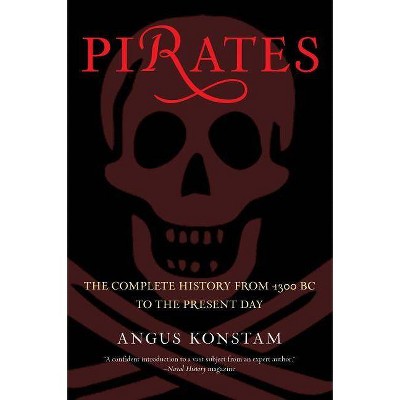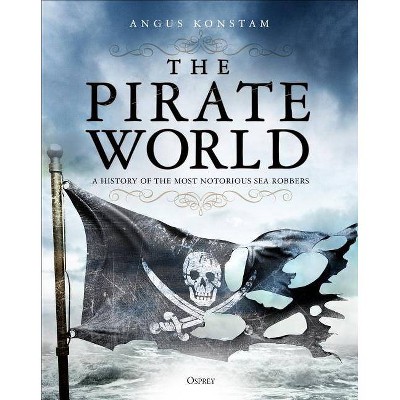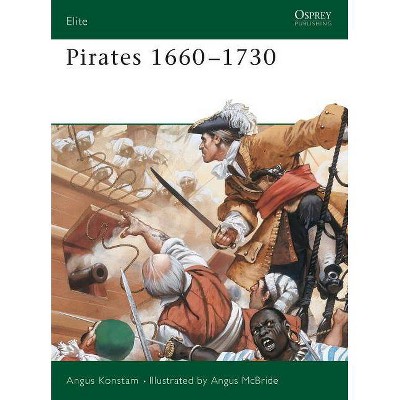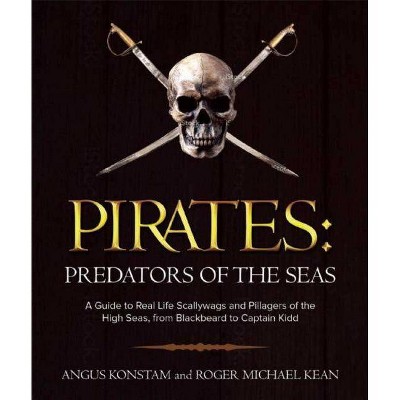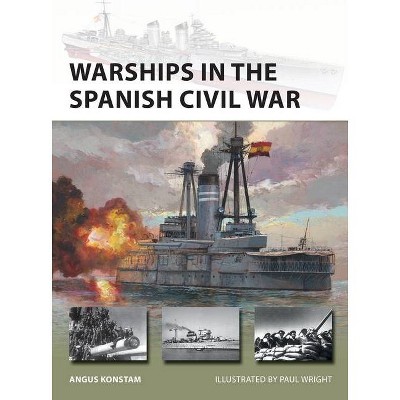Big Guns in the Atlantic - (Raid) by Angus Konstam (Paperback)
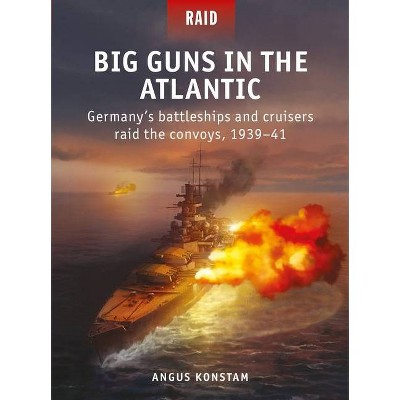
Similar Products
Products of same category from the store
AllProduct info
<p/><br></br><p><b> About the Book </b></p></br></br><b>In the early months and years of World War II, it was Germany's cruisers and battleships that most ravaged the Atlantic Convoys. This is the history of those raids, and how the success of 1941's Operation Berlin led directly to the Kriegsmarine sending into the Atlantic its greatest battleship - the mighty, ill-fated <i>Bismarck.</i></b><p/><br></br><p><b> Book Synopsis </b></p></br></br><p><b>In the early months and years of World War II, it was Germany's cruisers and battleships that most ravaged the Atlantic Convoys. This is the history of those raids, and how the success of 1941's Operation <i>Berlin </i>led directly to the Kriegsmarine sending into the Atlantic its greatest battleship - the mighty, ill-fated <i>Bismarck.</i></b> <p/>At the outbreak of World War II the German Kriegsmarine still had a relatively small U-boat arm. To reach Britain's convoy routes in the North Atlantic, these boats had to pass around the top of the British Isles - a long and dangerous voyage to their hunting grounds. Germany's larger surface warships were much better suited to this kind of long-range operation. So, during late 1939 the armored cruiser <i>Deutschland</i>, and later the battlecruisers <i>Scharnhorst</i> and <i>Gneisenau</i> were used as commerce raiders, to strike at Allied convoys in the North Atlantic. These sorties met with mixed results, but for Germany's naval high command they showed that this kind of operation had potential. Then, the fall of France, Denmark and Norway in early 1940 dramatically altered the strategic situation. The Atlantic was now far easier to reach, and to escape from. <p/>During 1940, further moderately successful sorties were made by the cruisers <i>Admiral Scheer</i> and <i>Admiral Hipper</i>. By the end of the year, with British mercantile losses mounting to surface raiders and U-Boats, plans were developed for a much larger raid, first using both cruisers, and then the two battlecruisers. The climax of this was <i>Operation Berlin</i>, the Kriegsmarine's largest and most wide-ranging North Atlantic sortie so far. <i>Scharnhorst</i> and <i>Gneisenau</i> remained at sea for two months, destroying 22 Allied merchant ships, and severely disrupting Britain's lifeline convoys. So, when the operation ended, the German commander, Admiral Lütjens was ordered to repeat his success - this time with the brand new battleship <i>Bismarck</i>. The rest, as they say, is history. These earlier Atlantic raids demonstrated that German surface ships could be highly effective commerce raiders. For those willing to see though, they also demonstrated just how risky this strategy could be. Covering a fascinating and detailed analysis of the Kriegsmarine's Atlantic raids between 1939 and 1941, this book will appeal to readers interested in World War II and in particular in Germany's naval operations.</p><p/><br></br><p><b> About the Author </b></p></br></br><b>Angus Konstam</b> hails from the Orkney Islands, and is the author of over 100 history books, 60 of which are published by Osprey. This acclaimed author has written widely on naval history, from Sovereigns of the Seas and Piracy: The Complete History to his most recent bestseller, <i>Jutland 1916: Twelve Hours to Win the War</i>. A former naval officer and museum professional, he worked as the Curator in both the Royal Armories, Tower of London and the Mel Fisher Maritime Museum in Key West, Florida. He now works as a full-time author and historian, and lives in Orkney, Scotland.
Price History
Cheapest price in the interval: 19.79 on November 8, 2021
Most expensive price in the interval: 19.79 on December 20, 2021
Price Archive shows prices from various stores, lets you see history and find the cheapest. There is no actual sale on the website. For all support, inquiry and suggestion messagescommunication@pricearchive.us

